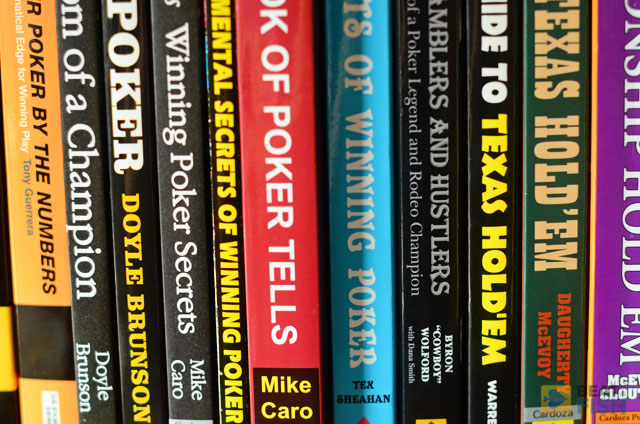Poker players have plenty of opportunities to improve their skills, which include training videos, articles, forums and more. Nevertheless, books on strategy of the game are considered to be the greatest source of knowledge and each year new titles are released on each of the poker disciplines written by the famous masters of the game. In this article, we have compiled a list of six groundbreaking poker books that will help you improve your strategy and expand your understanding of the game.
“Super System”, Doyle Brunson
The “Super System” by Doyle Brunson can be called a poker classic. First published in 1978, this book written by the Godfather of Poker contains valuable tips on playing five different disciplines: draw poker, stud, high-low stud, lowball and Hold’em. These tips can prove helpful for both novice and experienced players, but in the end it’s difficult to recommend anyone to follow them to the letter. Even though the book has been re-released in 2002, poker has changed a lot over the years and as a result, a lot of the information became outdated.
“Harrington on Hold’em”, Dan Harrington
“Harrington on Hold’em” is a No-Limit Hold’em bible that comes in two volumes and is considered to be one of the most thorough and comprehensive guides to the game in existence. Many experienced players consider this book to be simply unrivaled, as it covers all the important issues like starting hands, reading the table, pot odds, hand analysis, betting strategies for each of the streets and more. Nevertheless, the book isn’t all that suitable for the beginners, as some of the concepts can be difficult to grasp without some hands-on poker experience.
“Sit N’ Go Strategy”, Colin Moshman
In this book, a well-known player and coach Colin Moshman focuses on the topic of single-table tournaments –and is very successful in describing the peculiarities of such games, I might add. The book is a mandatory reading for SnG players and describes all the phase of single-table tournaments, as well as the metagame and strategy involved. All in all, Moshman’s “Sit N’ Go Strategy” should be your handbook if you started studying single-table tournaments or if you’re looking for ways of improving your game. At the same time, experienced players are quite likely to be already familiar with many of the concepts described on the pages of this book.
“No-Limit Hold ’em: Theory and Practice”, David Sklansky
Three-time WSOP champion David Sklansky is the author or co-author of 14 books on poker and game theory, but poker players should start with one of his recent works created in cooperation with Ed Miller – “No Limit Hold’em: Theory and Practice.” From start to finish, this book contains all the information necessary to become a strong player in No Limit Hold’em. Sklansky dedicated plenty of valuable chapters to pot control, adjusting to different stack sizes, “winning the battle of mistakes,” reading the hands of other participants of the game and manipulating your opponents. While newcomers will definitely not regret reading the book, ingesting all the information contained within its pages requires a combination of experience and multiple re-readings.
“Ace on the River”, Barry Greenstein
Greenstein’s book “Ace on the River” truly had a curious fate. Originally, it was supposed to be a prelude to Doyle Brunson’s “Super System 2” – Doyle asked Greenstein to write a 20-page chapter, Barry delivered a hundred. Brunson liked what he saw and agreed to either publish a summary of his text or a separate book. Barry chose the latter. “Ace on the River” is very different from most strategy books, which describe the basic principles and fundamentals of poker like starting hands, tactics and positions at the table. Greenstein books focuses on other areas of the game, expanding the reader’s knowledge on what it means to be a professional poker player. As a result, “Ace on the River” will be an useful reading material for both professional players and those who want to follow in their steps.
“Reading Poker Tells”, Zachary Elwood
“Reading Poker Tells” by Zach Elwood is different from all the other books included in our review. First of all, it will be extremely useful to offline players and secondly, it doesn’t even mention poker strategy. In a nutshell, Elwood has created the ultimate guide for all types of physical and verbal tells which can be spotted in a game of poker. In addition, the book pays special attention to important nuances such as a convenient way of classifying and remembering tells, as well as strategies that will help you in becoming “unreadable”.
We sincerely hope that our attempt at creating a guide to some of the most important poker books will help you in acquiring new skills, improving your game and understanding the psychology of poker.
